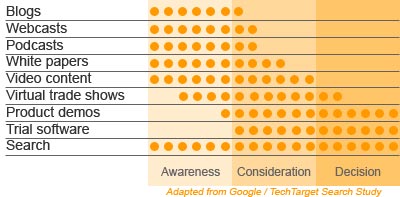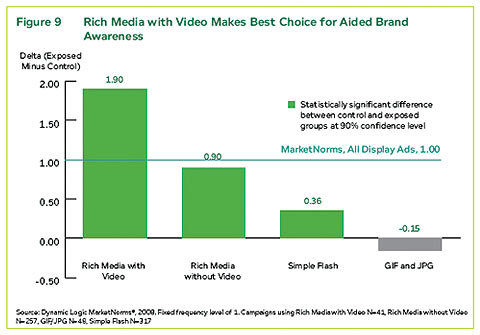
This post originally appeared on Marketing Director Tracy Thayne's personal website. It has been repurposed for the MarketStar audience.
An owner of a growing software business, who wants to supercharge demand for his products, approached me last week. From his description, marketing is made up of random acts that have added relatively little to the organic growth they’ve achieved. My evaluation revealed what I knew all along, that too little attention was being paid to the market’s way of procuring technology.
In business and especially in the B2B world, not having a clear understanding of the processes that make up the buying continuum, is a cardinal sin. Arming yourself with that understanding gives you strategic advantage by positioning your value to the right people at the right time. Chances are that your only competitors doing this today are those beating you in the market. To get out ahead and create demand momentum, consider these four pillars of demand generation:
Know the Decision Process
Accessibility to information has forever changed the way purchasing decisions are made. People like to self-inform by conducting research and creating vendor short lists without their inboxes being filled with aggressive sales communications. Today’s decision processes can look something like this:
- Decision owners utilize research individuals, groups or teams to seek out solutions.
- Results from search engines (the first page or so) inform researchers of the available options.
- The opinions of trusted industry peers and analysts help sift through options and solidify recommendations.
- Vendor short lists are created from those recommendations.
- Introductory conversations with short-listed vendors are finally initiated.
Finding yourself at the end of a decision process can be disheartening – mostly because you haven’t been in control of the information flow at key decision points. It is the responsibility of marketing to get your solution into consideration. This means, making the vendor short lists of researchers. How can you ensure this happens? Read on.
Valuable Content is King
Since buyers spend so much time on research, businesses should be committing substantial resources toward the development of valuable, informative content. It isn’t uncommon to see great solutions missing out on consideration simply because the content didn’t do its job. Without focused attention, it is easy to miss the mark with content. Poor or missing content can do more than keep you off a researchers short list, it can also damage word of mouth reputation. But never fear, with persistence a library of valuable content can soon be at your disposal. Here are some tips for creating valuable content:
- Map content to the buying continuum – awareness, consideration and decision. Think of this in terms of crawl, walk, run.
- Dynamic content is more effective than static – video and flash. A 2009 Google study showed rich media is more likely to lead to a purchase than static content (see figure 9). Let dynamic content lead researchers into valuable static content.
- Re-purpose content into multiple formats. Put content from an eBook into a Webcast for example.
- Make content easily consumed – shorter videos, limit registration requirements.
- Keep them coming back for more – dynamic libraries, relevant blog posts, links to supporting content.
Timing is Everything
Given all the marketing noise, timing has become highly critical. I can’t say enough about the importance of automated nurturing engines. They measure prospect interest, monitor site activity, and then respond with appropriate content streams.
- Find a good nurturing/automation tool. Don’t get overly complicated here – remember to crawl, walk, run. I’ve been looking at Pardot and like its ease of use and complete functionality.
- Create value streams that speak to prospect interests (see 5 Rules of Value Streams & Nurturing).
- Introduce content assets as the buying continuum dictates – don’t force content into places it doesn’t belong.
Consistency is Remembered
And finally, remember the marketing rule of “Five.” It takes five touches to embed your message/value into the minds of your prospects. One of the biggest marketing mistakes a business can make is by executing Random Acts of Marketing (RAM). Doing so produces inconsistency, resulting in market and buyer confusion. To make the rule of five work for you, consider this:
- Create and document a brand guide along with an adherence policy.
- Utilize an integrated marketing campaign framework. This ensures consistency in brand, message and theme, and supports communications across all audience types.
So remember these pillars as you plan your go-to-market strategies, and you’ll create strong demand and cultivate more qualified leads for your sales organization.







